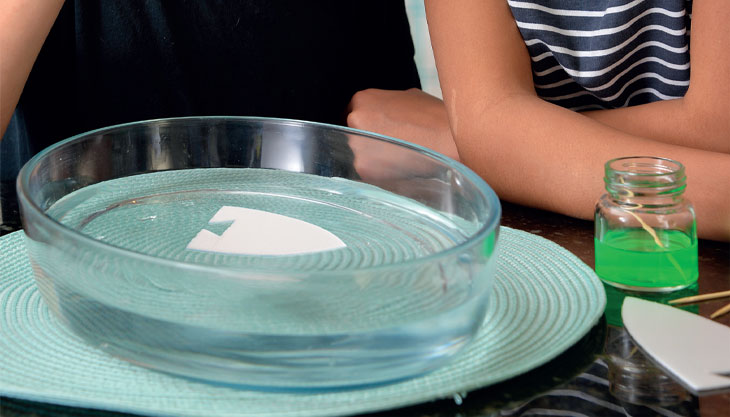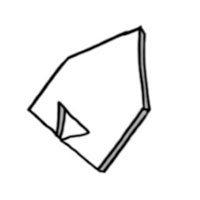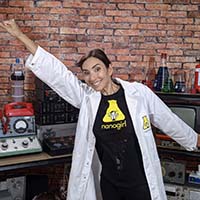Soap Powered Boat

How to Make your very own Soap Powered Boat… Scientific Principle: Surfactants
Time Required: 30 min
Watch in amazement as a floating boat, with no moving parts, speeds across the water using only the power of surface tension.
Equipment & Ingredients

- Polystyrene foam tray or cardboard
- Shallow tray / dish
- Scissors
- Toothpick
- Water
- Dishwashing liquid
Instructions
- Fill a tray with clean water.
- Cut the foam tray or cardboard into a boat shape as shown.
- Dip the toothpick into the dishwashing liquid and use it to apply a layer onto the sides of the notch at the back of the boat.
- Carefully place the boat onto the surface of the water and watch it speed across the water.
- If you want to repeat the experiment, replace the water in the tray with fresh, clean water.
The Science Behind the Soap Powered Boat
Surface tension is a phenomenon where the water molecules at the surface of a layer of water are attracted to each other in a way that creates a strong, flexible skin. It is this surface tension that lets the lightweight boat float on the surface of the water. Surface tension also helps insects walk on the surface of a pond. Dishwashing liquids and soaps are surfactants which means that they break down the surface tension of the water by disrupting the arrangement of the water molecules. As the surface tension breaks behind the boat, the water molecules move from areas of low surface tension to areas of high surface tension. This creates enough force to move the boat across the water towards the areas of high surface tension in front of it. This is known as the Marangoni effect.
Explore Further
» Does the boat travel faster or slower if the water is warm instead of cold? Why do you think this is?
» Will the experiment still get the boat to move if you use hand soap instead of dishwashing liquid?
» Why do you think the experiment does not work if you repeat it using the same tray of water?
Author: Nanogirl™ STEM Adventure



